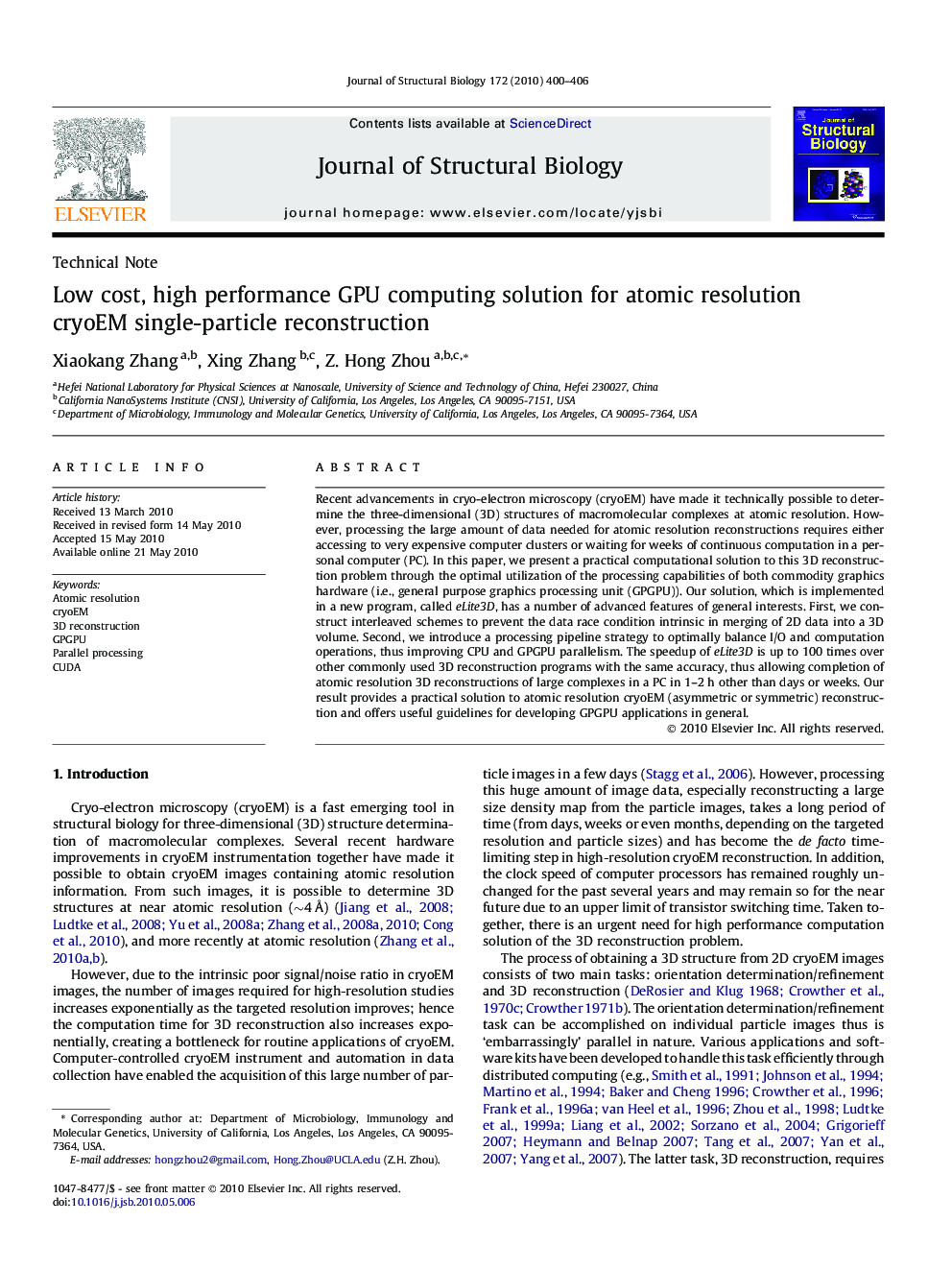| Article ID | Journal | Published Year | Pages | File Type |
|---|---|---|---|---|
| 5914966 | Journal of Structural Biology | 2010 | 7 Pages |
Abstract
Recent advancements in cryo-electron microscopy (cryoEM) have made it technically possible to determine the three-dimensional (3D) structures of macromolecular complexes at atomic resolution. However, processing the large amount of data needed for atomic resolution reconstructions requires either accessing to very expensive computer clusters or waiting for weeks of continuous computation in a personal computer (PC). In this paper, we present a practical computational solution to this 3D reconstruction problem through the optimal utilization of the processing capabilities of both commodity graphics hardware (i.e., general purpose graphics processing unit (GPGPU)). Our solution, which is implemented in a new program, called eLite3D, has a number of advanced features of general interests. First, we construct interleaved schemes to prevent the data race condition intrinsic in merging of 2D data into a 3D volume. Second, we introduce a processing pipeline strategy to optimally balance I/O and computation operations, thus improving CPU and GPGPU parallelism. The speedup of eLite3D is up to 100 times over other commonly used 3D reconstruction programs with the same accuracy, thus allowing completion of atomic resolution 3D reconstructions of large complexes in a PC in 1-2Â h other than days or weeks. Our result provides a practical solution to atomic resolution cryoEM (asymmetric or symmetric) reconstruction and offers useful guidelines for developing GPGPU applications in general.
Related Topics
Life Sciences
Biochemistry, Genetics and Molecular Biology
Molecular Biology
Authors
Xiaokang Zhang, Xing Zhang, Z. Hong Zhou,
